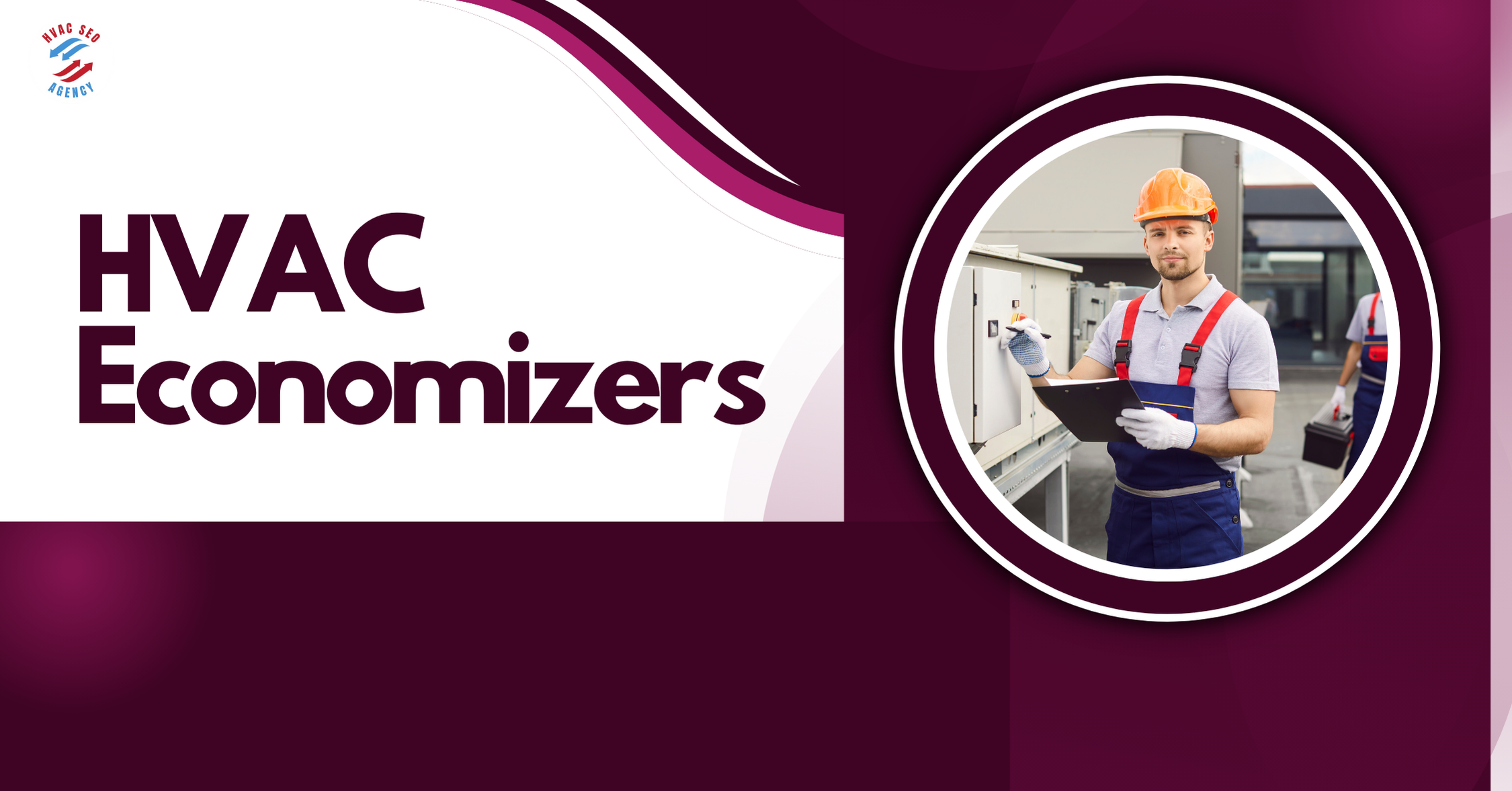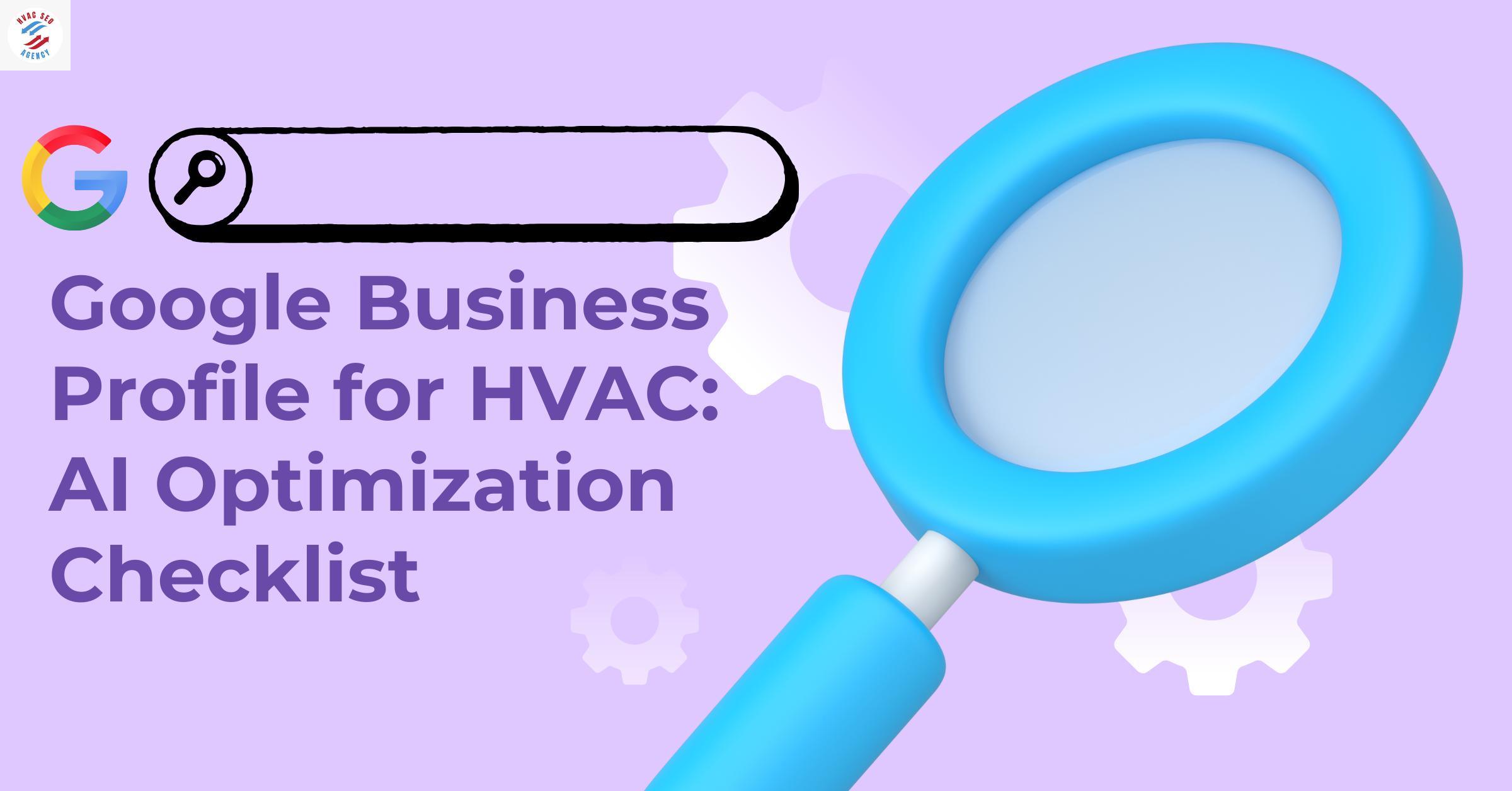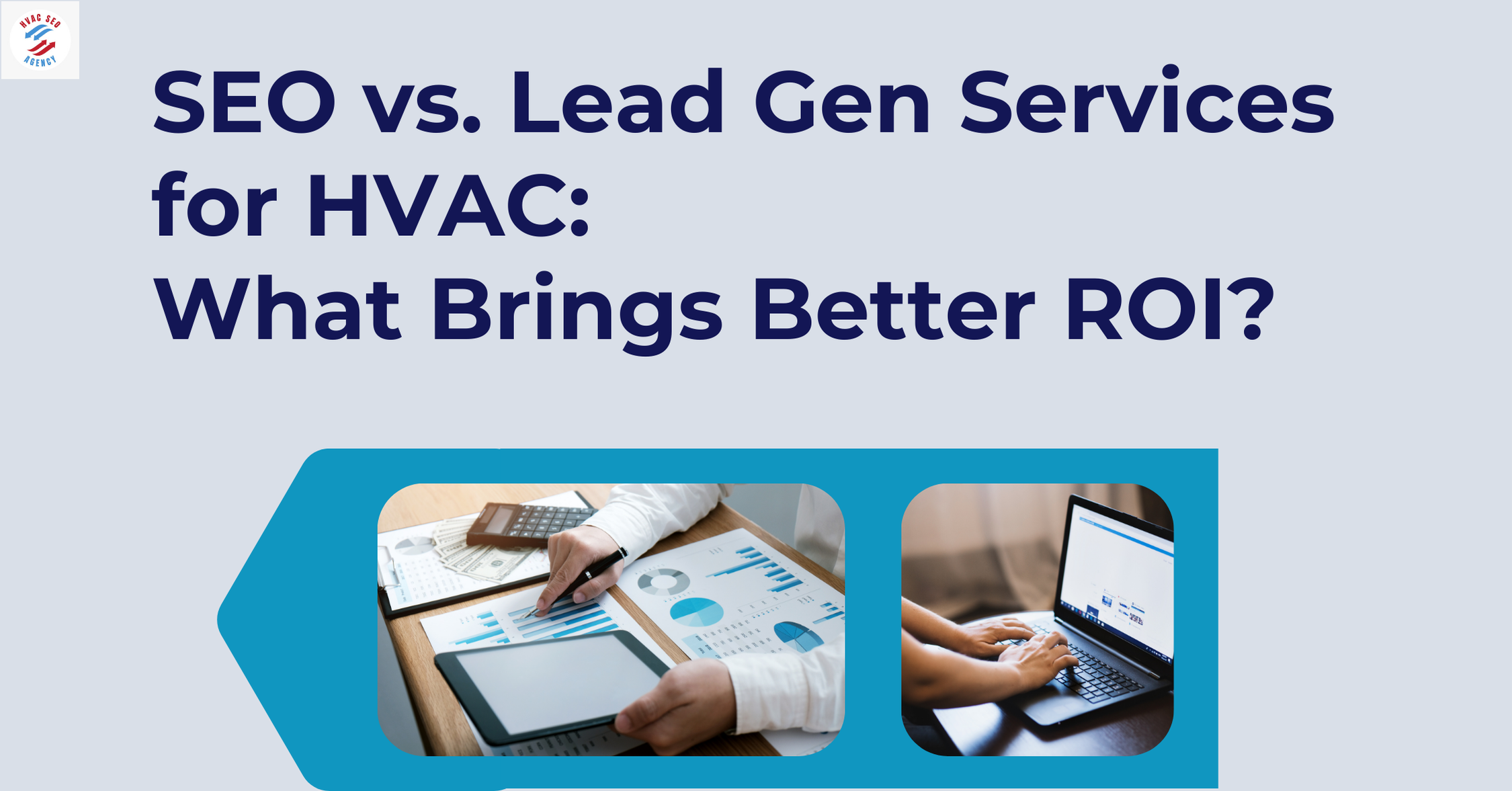HVAC Economizers: How They Work and Why You Need One

HVAC Economizers
An HVAC economizer is an energy-saving device that reduces the need for mechanical cooling by utilizing outside air to cool indoor spaces. It is commonly integrated into commercial HVAC systems to enhance energy efficiency, reduce costs, and improve indoor air quality. HVAC economizers automatically regulate the intake of outdoor air based on temperature and humidity levels, allowing for natural cooling when conditions are optimal.
According to the U.S. Department of Energy (DOE), HVAC systems account for nearly 40% of total building energy consumption in commercial properties. Incorporating an economizer can reduce energy usage by up to 20-30%, significantly cutting operational expenses while enhancing sustainability.
To maximize the benefits of HVAC economizers and attract more business, partnering with a specialized HVAC SEO agency is crucial. Some of the top agencies offering HVAC SEO services include HVAC Webmasters, Blue Corona, WebFX, OuterBox, and Plumbing & HVAC SEO. These agencies specialize in local SEO optimization, content marketing, PPC campaigns, and lead generation tailored specifically for HVAC businesses. Implementing effective SEO strategies can improve online visibility, increase search engine rankings, and ultimately drive more customer inquiries, ensuring sustained business growth in the competitive HVAC industry.
Importance of Energy Efficiency in HVAC Systems
The rising cost of electricity and increasing environmental concerns have made HVAC energy savings a top priority for businesses. Efficient HVAC systems help reduce carbon footprints, lower electricity bills, and extend the lifespan of HVAC equipment.
Key Industry Statistics on Energy Consumption
A well-optimized HVAC system minimizes energy waste, reduces dependency on mechanical cooling, and lowers maintenance costs all of which are crucial for businesses aiming for long-term profitability.
Overview of the Blog Content
In this blog, we will explore:
How HVAC economizers work
Different types of economizers
How they help with HVAC energy savings
Financial benefits and ROI analysis
Impact on environmental sustainability
Challenges and solutions for implementation
How HVAC SEO can generate leads and revenue for HVAC companies
Future trends in energy-efficient HVAC technology
By the end of this guide, you will understand why HVAC economizers are a must-have for any commercial HVAC system and how SEO for HVAC companies in Houston can help attract leads and increase revenue for HVAC businesses.
2. Understanding HVAC Economizers
What is an HVAC Economizer?
An HVAC economizer is a mechanical device integrated into heating, ventilation, and air conditioning (HVAC) systems to enhance energy efficiency by utilizing outdoor air for cooling when conditions are favorable. By reducing the reliance on mechanical cooling, economizers help lower energy consumption and operational costs.
Types of HVAC Economizers
Air-Side Economizers
Air-side economizers bring cool outside air directly into a building to reduce or eliminate the need for mechanical cooling. They are particularly effective in climates with cool, dry weather conditions.
Water-Side Economizers
Water-side economizers use the cooling capacity of water, such as from a cooling tower, to reduce the need for mechanical cooling. They are typically used in data centers with water-cooled or air-cooled chilled water plants.
How Do HVAC Economizers Work?
HVAC economizers operate by monitoring outdoor air conditions—such as temperature and humidity—and comparing them to indoor conditions. When outdoor air is cooler and drier than indoor air, the economizer opens dampers to allow fresh air in, reducing the need for mechanical cooling. This process, known as "free cooling," leverages favorable outdoor conditions to maintain indoor comfort efficiently.
Benefits of Using HVAC Economizers
Energy Savings
By utilizing cool outdoor air, economizers can significantly reduce the workload on mechanical cooling systems, leading to substantial energy savings. Studies have shown that economizers can reduce HVAC energy consumption by up to 25-30%.
Improved Indoor Air Quality
Economizers increase ventilation by bringing in fresh outdoor air, which helps expel indoor pollutants, allergens, and odors. This enhanced airflow contributes to a healthier and more comfortable indoor environment.
Extended Equipment Lifespan
Reducing the reliance on mechanical cooling decreases wear and tear on HVAC components, potentially extending the lifespan of the equipment and reducing maintenance costs.
Common Misconceptions About HVAC Economizers
Economizers Are Only Beneficial in Cold Climates: While economizers are highly effective in cooler climates, they can also provide energy savings in warmer regions during cooler seasons or nighttime when outdoor temperatures drop.
Economizers Compromise Indoor Air Quality: Some believe that bringing in outdoor air can introduce pollutants; however, economizers are equipped with filters that clean the incoming air, often improving indoor air quality.
High Installation and Maintenance Costs: Although there are upfront costs associated with installing economizers, the energy savings and extended equipment lifespan often result in a favorable return on investment.
3. The Impact of HVAC Economizers on Energy Savings
Energy Consumption in Traditional HVAC Systems
Traditional HVAC systems are significant energy consumers in both residential and commercial settings. In the United States, the residential sector sees approximately 42% of home energy consumption attributed to space heating and cooling. Similarly, in the commercial sector, HVAC systems account for a substantial portion of energy use, with estimates indicating that HVAC systems can account for up to 40% of total building energy consumption.
Table : Average Energy Consumption in U.S. Homes
Integrating HVAC economizers into existing systems can lead to significant energy savings by reducing the reliance on mechanical cooling. Economizers achieve this by utilizing favorable outdoor air conditions to cool indoor spaces, thereby decreasing the load on compressors and other energy-intensive components.
Key Benefits of HVAC Economizers:
Reduced Energy Consumption: By leveraging outdoor air for cooling, economizers can reduce the energy required for mechanical cooling.
Lower Operational Costs: Decreased energy usage translates to reduced utility bills, offering cost savings for building owners and operators.
Enhanced System Efficiency: Economizers can improve the overall efficiency of HVAC systems, leading to better performance and longevity.
Table : Potential Energy Savings with HVAC Economizers
Graph : Percentage Reduction in Energy Consumption After Implementing Economizers
A bar graph illustrating the energy consumption before and after the implementation of economizers across various building types.
Case Studies of Successful Implementations
Case Study 1: Office Building in California
A mid-sized office building in California integrated air-side economizers into their existing HVAC system. Post-implementation, the building experienced a 15% reduction in annual energy consumption, resulting in annual savings of approximately $25,000.
Case Study 2: Hospital in New York
A hospital in New York installed water-side economizers to support their cooling systems. This upgrade led to a 10% decrease in energy usage, equating to annual savings of $100,000.
Case Study 3: University Campus in Texas
A university campus in Texas retrofitted their HVAC systems with economizers across multiple buildings. The project resulted in an average energy savings of 18% per building, with a cumulative annual savings of $500,000.
4. Financial Benefits of Installing HVAC Economizers
Cost Savings on Energy Bills
Integrating HVAC economizers into your building's HVAC system can lead to substantial reductions in energy consumption, resulting in significant cost savings on energy bills. By utilizing cooler outdoor air to assist in cooling indoor spaces, economizers reduce the reliance on mechanical cooling systems, thereby lowering energy usage.
HVAC Financing: How Does It Work? Understanding the various financing options available for HVAC systems can help businesses and homeowners afford energy-efficient upgrades without significant upfront costs.
Table : Average Monthly Energy Costs Before and After Economizer Installation
Note: These figures are illustrative and actual savings may vary based on specific building characteristics and local energy rates.
Graph : Trend of Energy Costs Over Time with Economizer Use
A line graph illustrating the decrease in energy costs over a 12-month period following the installation of HVAC economizers.
Return on Investment (ROI) Analysis
Investing in HVAC economizers not only reduces operational costs but also offers a favorable return on investment (ROI). The initial expenditure for purchasing and installing an economizer is often offset by the energy savings achieved over time.
Table : ROI Calculation for HVAC Economizer Installation Over a 5-Year Period
Note: ROI is calculated as [(Total Savings - Initial Investment) / Initial Investment] x 100.
Graph : Cumulative Savings vs. Initial Investment Over Time
A bar graph comparing the initial investment against cumulative savings over a 5-year period for different building types.
Incentives and Rebates
To encourage the adoption of energy-efficient technologies, various federal and state programs offer incentives and rebates for installing HVAC economizers. These financial incentives can further improve the ROI and reduce the payback period for your investment.
Federal Tax Credits
The U.S. federal government provides tax credits for energy-efficient upgrades, including HVAC systems equipped with economizers. Homeowners can claim up to 30% of the cost of such improvements, with a maximum annual credit of $3,200, through 2032.
Utility Company Rebates
Many utility companies offer rebates to businesses and homeowners who implement energy-efficient HVAC solutions. For example, Pacific Gas and Electric Company (PG&E) provides rebates for advanced rooftop HVAC controls, including economizer systems.
State-Specific Programs
Individual states have their own incentive programs to promote energy efficiency. For instance, Pennsylvania's Act 129 includes rebates for HVAC system tune-ups and upgrades, leading to substantial energy savings statewide.
How to Apply for Incentives
Research Available Programs: Identify federal, state, and utility company programs offering incentives for HVAC economizer installations in your area.
Review Eligibility Criteria: Ensure that your planned HVAC upgrades meet the specific requirements of the incentive programs.
Submit Applications: Complete and submit the necessary application forms, along with any required documentation, to the appropriate agencies or utility companies.
Consult Professionals: Work with HVAC contractors experienced in energy-efficient installations, as they can assist in navigating the incentive application process.
5. Environmental Impact of HVAC Economizers
Reduction in Carbon Footprint
Heating, Ventilation, and Air Conditioning (HVAC) systems are significant contributors to energy consumption in both residential and commercial buildings, leading to substantial greenhouse gas emissions. Integrating HVAC economizers can play a pivotal role in mitigating these environmental impacts.
Key Environmental Benefits of HVAC Economizers:
Lower Greenhouse Gas Emissions: By reducing the reliance on mechanical cooling, economizers decrease the amount of energy required, leading to a reduction in greenhouse gas emissions associated with electricity generation.
Enhanced Energy Efficiency: Economizers optimize HVAC operations by utilizing outdoor air for cooling when conditions permit, thereby improving overall system efficiency and reducing energy waste.
Graph : Decrease in Carbon Emissions Due to Economizer Implementation
A line graph illustrating the reduction in carbon dioxide emissions over a year after installing HVAC economizers.
Compliance with Environmental Regulations
Adopting HVAC economizers aligns with various environmental regulations aimed at promoting energy efficiency and reducing carbon footprints. Compliance with these standards not only benefits the environment but also positions businesses as responsible and forward-thinking.
Relevant Environmental Standards and Regulations:
ASHRAE 90.1: This standard provides minimum requirements for energy-efficient designs for buildings, except low-rise residential buildings. It includes guidelines on HVAC systems, emphasizing the importance of economizers in enhancing energy efficiency.
EPA Regulations on Refrigerants: The Environmental Protection Agency (EPA) has implemented regulations to phase down the use of hydrofluorocarbons (HFCs), potent greenhouse gases commonly used as refrigerants in HVAC systems. By 2036, the EPA aims to reduce HFC emissions by 85%. Implementing economizers can complement these efforts by reducing the overall cooling load and associated refrigerant usage.
Table : Overview of Environmental Regulations Affecting HVAC Systems
Benefits of Compliance:
Financial Incentives: Many regulatory bodies offer incentives, rebates, or tax credits to businesses that adopt energy-efficient technologies, including HVAC economizers.
Enhanced Reputation: Demonstrating compliance with environmental regulations showcases a company's commitment to sustainability, potentially attracting eco-conscious clients and partners.
Operational Efficiency: Complying with these standards often leads to improved system performance, reduced operational costs, and extended equipment lifespan.
6. Technical Considerations When Implementing HVAC Economizers
Compatibility with Existing HVAC Systems
Before integrating an HVAC economizer, it's essential to assess its compatibility with your current HVAC system. Key factors to consider include:
System Type: Ensure the economizer is designed to work with your specific HVAC configuration. Some economizers are tailored for particular systems or setups.
Control Integration: Verify that the economizer can seamlessly integrate with your existing control systems, including thermostats and building automation systems.
Physical Space: Confirm that there is adequate space for the installation of the economizer and any additional components it may require.
Climate Suitability: Choose an economizer that matches the climate in which your building is located. In cooler climates, dry bulb economizers work well, while in more humid areas, enthalpy economizers are better suited.
Consulting with an HVAC professional can help determine the best economizer solution for your system, ensuring optimal performance and energy efficiency.
Accurate HVAC Load Calculations Tools and Techniques You Need are essential for designing efficient HVAC systems. Proper load calculations ensure optimal system performance, energy efficiency, and cost savings.
Installation and Maintenance Requirements
Proper installation and regular maintenance are crucial for the efficient operation of HVAC economizers. Consider the following:
Professional Installation: Engage qualified HVAC technicians to install the economizer, ensuring all components are correctly integrated and calibrated.
Regular Inspections: Perform semi-annual walkthroughs to inspect economizer equipment, checking for issues such as stuck dampers or sensor malfunctions.
Cleaning and Component Replacement: Regularly clean the system and replace any worn-out parts or components to maintain efficiency.
Pre-Season Tune-Ups: Conduct pre-season HVAC tune-ups to ensure the economizer and the entire HVAC system are operating optimally before peak usage periods.
Filter Maintenance: Change air filters at least twice a year to prevent airflow restrictions and maintain indoor air quality.
Adhering to these maintenance practices can extend the lifespan of your economizer and ensure sustained energy savings.
Potential Challenges and Solutions
While HVAC economizers offer numerous benefits, certain challenges may arise during implementation and operation:
Sensor Calibration Issues: Inaccurate sensors can lead to improper economizer operation. Regular calibration and testing are essential to maintain accuracy.
Damper Malfunctions: Stuck or malfunctioning dampers can hinder airflow and reduce efficiency. Routine inspections and maintenance can prevent such issues.
Control System Integration: Ensuring seamless integration with existing control systems can be complex. Collaborate with experienced HVAC professionals to facilitate smooth integration.
Climate Limitations: In hot and humid climates, economizers may be less effective. Assessing climate suitability before installation is crucial.
By proactively addressing these challenges, you can maximize the benefits of HVAC economizers and enhance your building's energy efficiency.
7. Leveraging HVAC SEO to Boost Business Growth
In today's digital landscape, a robust online presence is essential for HVAC companies aiming to generate leads and increase revenue. Implementing effective Search Engine Optimization (SEO) strategies ensures that your services are easily discoverable by potential customers. By optimizing your website and online content, you can attract more visitors, convert leads, and ultimately grow your business.
The Role of Landing Pages in HVAC Lead Conversion is crucial for turning website visitors into paying customers. A well-optimized landing page can drive engagement, capture leads, and increase conversion rates for HVAC businesses.
Understanding HVAC SEO
HVAC SEO involves optimizing your online content to rank higher in search engine results for relevant keywords. This process enhances your visibility to individuals searching for HVAC services in your area, increasing the likelihood of attracting new clients.
Key SEO Strategies for HVAC Companies
Keyword Research: Identify and incorporate keywords that potential customers use when searching for HVAC services. For example, terms like "HVAC repair," "air conditioning installation," and "furnace maintenance" are commonly searched.
Local SEO: Optimize your online presence for local searches by including location-specific keywords such as "HVAC services in [City]" or "air conditioner repair near me." This approach ensures your business appears in local search results, attracting nearby customers.
Google Business Profile: Claim and optimize your Google Business Profile (formerly Google My Business) to enhance credibility and provide accurate contact information. A complete profile makes it easier for customers to find and contact you.
Content Creation: Develop informative blog posts, FAQs, and guides related to HVAC services, local climate considerations, energy efficiency, and indoor air quality. Incorporate relevant keywords naturally into the content to address common customer queries and concerns.
On-Page Optimization: Ensure that title tags, meta descriptions, headings, and URLs are optimized with relevant keywords. A clear and logical site structure with internal links enhances user experience and search engine indexing.
Mobile Optimization: With the increasing use of mobile devices, ensure your website is mobile-friendly. A responsive design improves user experience and search engine rankings.
Page Speed: Optimize website loading times by compressing images, minimizing HTTP requests, and leveraging browser caching. Fast-loading pages enhance user experience and reduce bounce rates.
Customer Reviews: Encourage satisfied customers to leave positive reviews on platforms like Google and Yelp. Positive reviews enhance your online reputation and influence potential customers.
Backlink Building: Acquire backlinks from reputable websites to boost your site's authority and search engine rankings. Engage in local partnerships and industry-specific directories to build quality backlinks.
Analytics Monitoring: Utilize tools like Google Analytics and Google Search Console to track website traffic, keyword rankings, and user engagement. Regular analysis helps refine SEO strategies for continuous improvement.
Benefits of Implementing HVAC SEO
Increased Visibility: Higher search engine rankings make your business more visible to potential customers searching for HVAC services.
Lead Generation: Targeted SEO strategies attract qualified leads actively seeking HVAC solutions, increasing conversion rates.
Cost-Effective Marketing: Compared to traditional advertising methods, SEO offers a higher return on investment by targeting users already interested in your services.
Competitive Advantage: A well-optimized website differentiates your business from competitors, positioning you as a leader in the HVAC industry.
By implementing these SEO strategies, HVAC companies can enhance their online presence, attract more leads, and drive revenue growth.
8. Future Trends in HVAC Economizer Technology
The HVAC industry is continually evolving, with advancements in economizer technology playing a pivotal role in enhancing energy efficiency and sustainability. Staying abreast of these trends is crucial for businesses aiming to optimize their HVAC systems and reduce operational costs.
Integration with Smart Building Systems
Modern HVAC economizers are increasingly being integrated into smart building systems, allowing for seamless communication between various building components. This integration facilitates real-time monitoring and control, optimizing HVAC performance based on occupancy patterns, weather forecasts, and energy demand. For instance, advanced economizers can adjust ventilation rates dynamically, ensuring optimal indoor air quality while minimizing energy consumption. This synergy between economizers and smart systems leads to more responsive and efficient building operations.
Advancements in Sensor Technology
The effectiveness of HVAC economizers heavily relies on accurate sensing of environmental conditions. Recent advancements in sensor technology have led to more precise and reliable measurements of temperature, humidity, and air quality. Enhanced sensors enable economizers to make more informed decisions about when to utilize outdoor air for cooling, thereby maximizing energy savings. Additionally, improved sensor durability reduces maintenance requirements and extends the lifespan of economizer systems.
Enhanced Energy Modeling and Simulation Tools
The development of sophisticated energy modeling and simulation tools has revolutionized the design and implementation of HVAC economizers. These tools allow engineers to predict the performance of economizer systems under various scenarios, facilitating optimized design and operation. By simulating factors such as building orientation, local climate, and occupancy patterns, these models help in tailoring economizer strategies that yield the highest energy savings. This predictive capability leads to more informed decision-making and efficient resource utilization.
Emergence of Hybrid Economizer Systems
Hybrid economizer systems, which combine air-side and water-side economizer functionalities, are gaining traction in the HVAC industry. These systems offer greater flexibility and efficiency by leveraging the advantages of both approaches. For example, during mild weather conditions, an air-side economizer can be utilized, while a water-side economizer becomes more effective during cooler periods. This adaptability ensures that the HVAC system operates at peak efficiency across a broader range of environmental conditions, leading to substantial energy savings.
Focus on Sustainability and Regulatory Compliance
As global emphasis on sustainability intensifies, HVAC economizers are being designed to meet stricter environmental standards and regulations. Innovations are focused on reducing refrigerant usage, minimizing carbon footprints, and enhancing overall system efficiency. Compliance with standards such as ASHRAE 90.1 is becoming a driving force behind economizer technology advancements. By aligning with these regulations, businesses not only contribute to environmental conservation but also benefit from incentives and improved corporate reputation.
9. Frequently Asked Questions
1. What is an HVAC economizer and how does it work?
An HVAC economizer is a device integrated into heating, ventilation, and air conditioning systems to enhance energy efficiency by utilizing outside air for cooling when conditions are favorable. It monitors outdoor air temperature and humidity levels; when these conditions are suitable, the economizer allows cooler external air to enter the building, reducing the need for mechanical cooling. This process, known as "free cooling," can significantly lower energy consumption.
2. What are the benefits of installing an economizer in my HVAC system?
Installing an economizer offers several advantages:
Energy Savings: By reducing reliance on mechanical cooling, economizers can lower energy consumption and utility costs.
Improved Indoor Air Quality: Economizers increase ventilation by introducing fresh outdoor air, enhancing indoor air quality.
Extended Equipment Lifespan: Decreasing the workload on mechanical cooling components can lead to reduced wear and tear, potentially extending the lifespan of HVAC equipment.
3. Are economizers suitable for all climates?
Economizers are most effective in regions with moderate to cool climates, where outdoor air temperatures frequently fall below indoor temperatures. In hot and humid climates, the benefits may be limited, as the outdoor air may not be suitable for cooling purposes.
4. How do I know if my existing HVAC system is compatible with an economizer?
Compatibility depends on several factors, including the type and age of your HVAC system. It's advisable to consult with a qualified HVAC professional who can assess your current setup and determine if integrating an economizer is feasible and beneficial.
5. What maintenance is required for an HVAC economizer?
Regular maintenance is essential to ensure optimal performance:
Inspections: Periodically check sensors, dampers, and controls for proper operation.
Cleaning: Keep components free from dust and debris to maintain efficiency.
Calibration: Ensure sensors and controls are accurately calibrated to respond correctly to outdoor conditions.
Routine maintenance helps prevent malfunctions and sustains energy savings over time.
6. Are there any code requirements for installing economizers?
Yes, building codes in some regions mandate the use of economizers in certain commercial HVAC systems to promote energy efficiency. It's important to consult local building codes and regulations to determine specific requirements in your area.
7. Can installing an economizer help my business qualify for energy efficiency incentives?
Yes, many utility companies and government programs offer incentives for implementing energy-efficient technologies, including HVAC economizers. These incentives can offset initial installation costs and improve return on investment. Consult with local utility providers and energy programs to explore available opportunities.
10. Conclusion
Integrating HVAC economizers into your building's heating, ventilation, and air conditioning systems presents a strategic approach to enhancing energy efficiency, reducing operational costs, and promoting environmental sustainability. By leveraging cooler outdoor air for indoor cooling needs, economizers decrease reliance on mechanical refrigeration, leading to significant energy savings. This not only lowers utility expenses but also extends the lifespan of HVAC equipment by reducing wear and tear.
Beyond financial benefits, economizers contribute to improved indoor air quality by introducing fresh outdoor air, thereby diluting indoor pollutants and maintaining optimal humidity levels. This enhancement in air quality can lead to healthier and more comfortable indoor environments.
From an environmental perspective, the adoption of economizers aligns with global efforts to reduce carbon footprints and adhere to stringent environmental regulations. By decreasing energy consumption, buildings equipped with economizers emit fewer greenhouse gases, supporting sustainability initiatives and enhancing corporate social responsibility profiles.
To maximize the benefits of HVAC economizers, it's crucial to ensure proper installation, regular maintenance, and integration with advanced building management systems. Additionally, implementing effective HVAC SEO strategies can amplify your business's online presence, attracting more clients and driving revenue growth.
Incorporating HVAC economizers is a forward-thinking decision that offers substantial economic, environmental, and operational advantages. As energy efficiency becomes increasingly paramount, economizers stand out as a valuable investment for any building aiming to optimize performance and sustainability.






